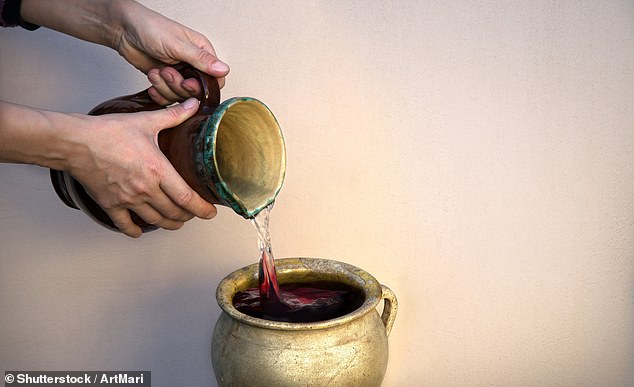
Archaeologists Claim Discovery of Jesus’ Cana Miracle Site in Galilee, Israel, Where Water Turned to Wine
Archaeologists Identify Khirbet Qana as Potential Site of Jesus’ First Miracle
The biblical account of Jesus turning water into wine at a wedding in Cana of Galilee marks a pivotal moment in Christian history. While the traditional site visited by pilgrims is Kafr Kanna, new excavations at Khirbet Qana, 8 miles northwest of Nazareth, suggest this lesser-known village may be the true location.
Rediscovering Cana
The Gospel of John describes Jesus’ first miracle occurring at a Jewish wedding in Cana, where he transformed ceremonial water jars into wine. For centuries, Kafr Kanna’s “Wedding Church” has drawn pilgrims. However, archaeologists argue Khirbet Qana—a thriving Jewish village during Jesus’ lifetime—holds stronger historical claims.

Artist’s impression of the wedding at Cana.
Evidence at Khirbet Qana
Excavations led by Dr. Tom McCollough reveal a Jewish settlement from 323 BC to 324 AD, including a synagogue, ritual baths (miqva’ot), and coins from the Maccabean revolt. A network of underground Christian worship caves, dating to the 3rd century AD, offers compelling evidence. These caves feature crosses, pilgrim names, and the Greek inscription “Kyrie Iesou” (Lord Jesus). Most strikingly, an altar with two stone jars was discovered—potentially linked to the six vessels described in the Bible.

Ruins of Khirbet Qana, revealing early Christian worship sites.
Kafr Kanna’s Convenience vs. Khirbet Qana’s Authenticity
Scholars like Dr. James Tabor note Kafr Kanna gained prominence in the Middle Ages due to its accessibility for pilgrims, despite lacking Roman-era Jewish ruins. Meanwhile, Khirbet Qana’s remote hilltop location made it less convenient but archaeologically credible. Dr. McCollough emphasizes its Jewish roots and early Christian veneration as key proof.
Cana’s Role in Jesus’ Life
Bible scholars suggest Cana may have been a strategic base for Jesus. The Gospel of John notes his repeated visits, including after the Temple disturbance in Jerusalem. His disciple Nathanael hailed from Cana, and Mary’s involvement in the wedding hints at familial ties—possibly even a brother’s ceremony.

Christian graffiti in Khirbet Qana’s caves, circa 4th century AD.
What Was Biblical Wine Like?
Wine in Jesus’ era, essential for hydration and social rituals, differed vastly from modern varieties. Dr. Paulina Komar explains Roman wines aged in clay pots, yielding flavors akin to sherry or Georgian qvevri wines, with notes of dried fruit and nuts. Alcohol content reached 15-16%, and herbs often masked spoilage. The “good wine” Jesus created might resemble these robust, complex varieties.

Khirbet Qana’s landscape, potentially Jesus’ retreat.
Conclusion
While debates continue, Khirbet Qana’s archaeological and historical layers offer a fresh lens into Christianity’s origins. As excavations persist, this site may redefine understanding of Jesus’ early ministry and miracles.

Paolo Veronese’s 1562 depiction of the wedding at Cana.
(Word count: 598)


